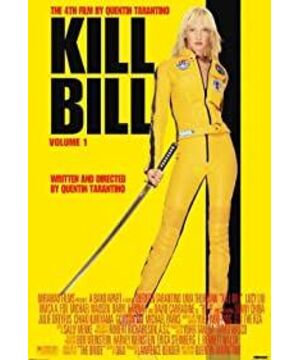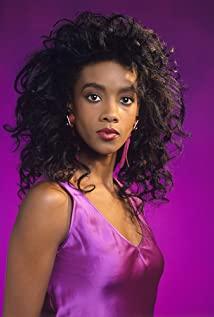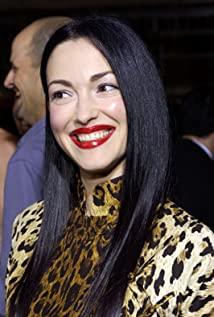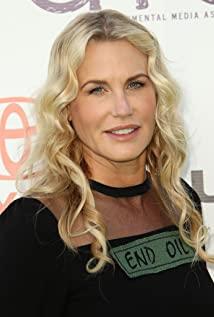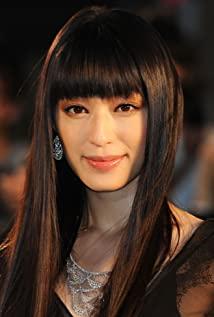Spaghetti Westerns are the result of cross-breeding with American Westerns. In the 1940s and 1950s, Italians were very keen on American Westerns, but in the 1960s, American Westerns faded out of the Italian market due to market and distribution factors, so Italians decided to make their own Westerns. Compared with American Westerns, the characters in Italian Westerns are rougher, have no heroic sense of justice, and are more about the pursuit of instinctive desires such as money. However, spaghetti westerns are also more interesting, not only with witty words, but also with some dark humor in life and death. One of the representatives is Sergio Leone, whose "Money Trilogy" ("Red Dead Redemption", "Red Dead Redemption", "Lone Ranger Duel Hell's Gate") and "Once Upon a Time in the West" can be called a generation. Classic, Tarantino is deeply influenced by it. In "Kill Bill I", although there are not too many classic spaghetti western scenes, at least a lot of "cliches" are borrowed in the lines, which adds a lot of cool feeling to the characters.
Tarantino is a die-hard fan of Hong Kong kung fu films in the 1960s and 1970s. He especially likes films directed by Shaw Brothers Zhang Che. The combination of hard bridge and hard horse kung fu combined with blood-splattered tragic scenes is in line with what Tarantino has always been good at. Violent style. Although the performance of Hong Kong-style kung fu in this first volume is not very sufficient due to the different division of labor between the two action styles before and after the film, the audience can at least see the tower from Uma Thurman's black-patterned yellow outfit. Lentino's tribute to kung fu superstar Bruce Lee. In fact, in the interview, Tarantino bluntly explained that the costume design was a replica of Bruce Lee's image in "Game of Death", but it was replaced with leather clothes. The "Black Super Mask" of the "Crazy 88 Group" also has a lot to do with the shape of the Green Hornet. As for casting, not to mention, Tarantino has been eager to cooperate with Lau Ka Fai since he saw Shaolin's 1970s Kung Fu classic "Shaolin Thirty-Six Rooms", and now he finally got his wish. And Bill's actor David Carradine is also Tarantino's kung fu idol in the United States. Carradine is in the United States with Chuck Norris (Chuck Norris, Bruce Lee, 6 consecutive world karate champions, No. 1 in the Western world) He starred in the TV movie and TV series "Kung Fu" which was popular in the United States in the 1970s. Later, he even wrote a book "Shaolin Spirit" to explore the philosophy of Kung Fu.
Tarantino is even more obsessed with samurai movies than Hong Kong kung fu movies, but when it comes to samurai movies, it is difficult to hear a master like Akira Kurosawa from his mouth since he was a child, because he is interested in those who purely express samurai swordsmanship. bloody movie. In this way, Chiba Shinichi, a non-big-name actor, was admired by Tarantino because of his years of struggle in the front line of Japanese samurai movies. Tarantino asked Chiba Shinichi to come and not even let the old man use the sword himself, but to appear as a god of kendo, even his name in the movie is derived from Chiba Shinichi's "Shadow Warrior" (Hattori Hanz ?: Kage no Gundan) TV series. The swordsmanship and swordsmanship of the Japanese samurai, just like the Japanese character, is a unity of elegance and cruelty. In addition to paying homage to the beauty of the samurai sword, Tarantino also uses an intuitive violent lens to express the samurai in the film. The bloodthirsty nature of the knife.
Ultimately, by combining multiple elements, Tarantino not only presents a splendid and captivating genre feast, but also a rebellious spirit. In fact, going back to the source, the idea of shooting "Kill Bill" originated from Tarantino's teenage years in the South Bay area of Los Angeles. There are many second-round theaters called "Grind House" in the local area. Grind House is nothing. The high-end places are dedicated to showing B-level films with small investment, short cycle and simple plot. Among them, kung fu films have left a deep imprint in Tarantino's mind. He recalled: "Kung Fu movies were all the rage in the early '70s, when I was a kid, and in these cinemas, all the kung fu movies were released for about two years, even when the kung fu movie craze faded, in the late 1970s and early 1980s in the South It's still found in the Bay Area, and I think that's one of the greatest genres of movies."
Also, on TV, Tarantino saw Bruce Lee's The Green Hornet, and later on the ABC TV series Kung Fu. ", David Carradine, who played the kung fu master, opened his eyes again. A few years later, Tarantino became keen on Asian action films, with a preference for "Shadow Samurai" starring Shinichi Chiba, which aired on Japanese television. By the mid-1980s, when a new wave of Hong Kong action films began to emerge, Tarantino, who was already a clerk at a Manhattan Beach video store, was certainly a treasure trove of these films.
Tarantino himself admitted that Chiba's violent work influenced his later completed "Deadly Romance" script, while the Hong Kong action film "Dragon Tiger" inspired 1992's "Reservoir Dogs." He said: "I've said many times that my films take place in two completely different worlds. One is the 'Quentin world' of Pulp Fiction and Dangerous Relations, and the other is the 'movie world'. "Kill Bill" is the first film I made that took place in the 'movie world'. The story of the film does not take place in the world we live in. Women are no longer a weak sex, they are just as strong as men and can go Kill and be killed."
In fact, initially, Tarantino did not intend to split "Kill Bill" into two parts. Later, Harvey Weinstein proposed to split it into two films. Tarantino thought the idea was very interesting. Just figured out what to do. In the summer of 2003, Tarantino showed Weinstein dailies of the first part, and the latter's unequivocal assessment ended well enough that it should be two films. However, although they are from the same family, the two films have their own tone and narrative strategies. The first one focuses on Japanese culture, while the second focuses on Chinese culture.
View more about Kill Bill: Vol. 1 reviews


